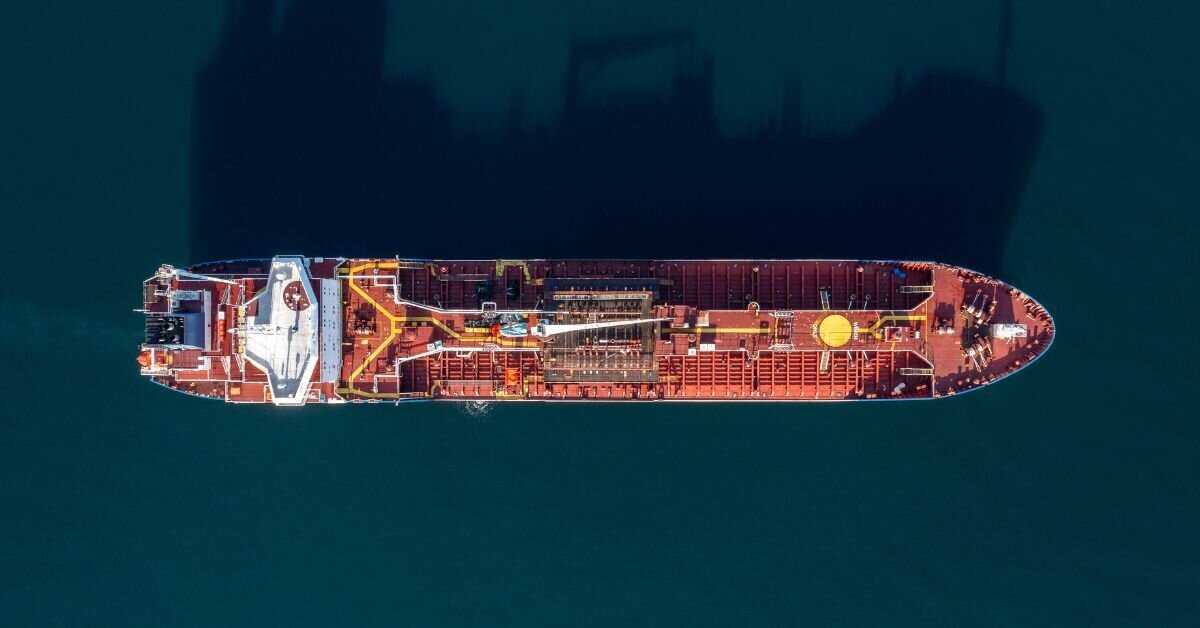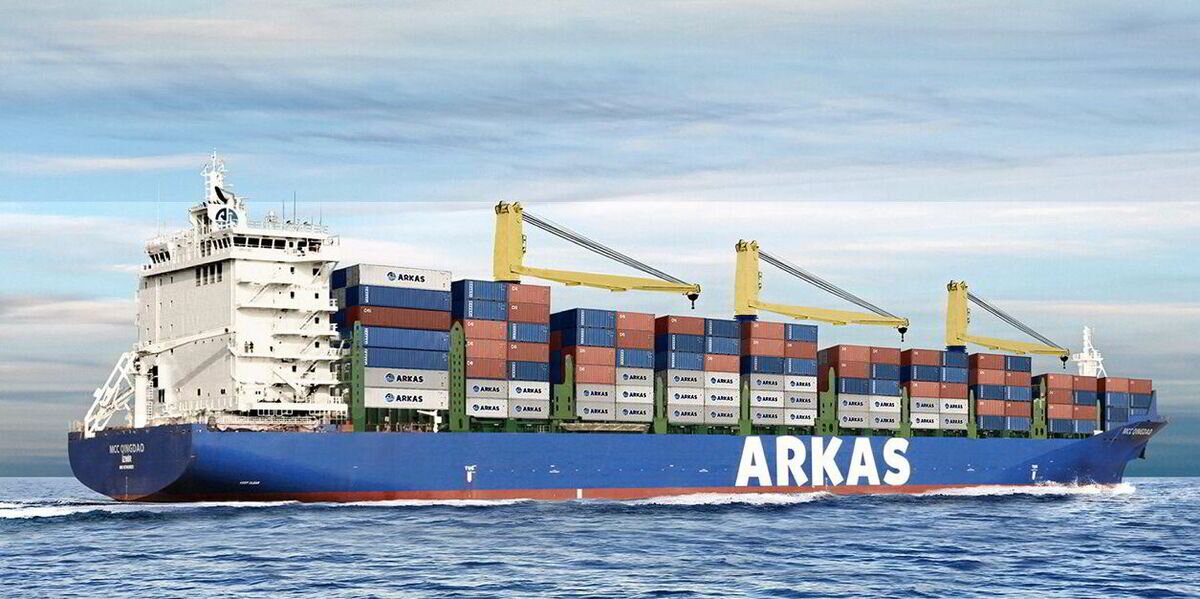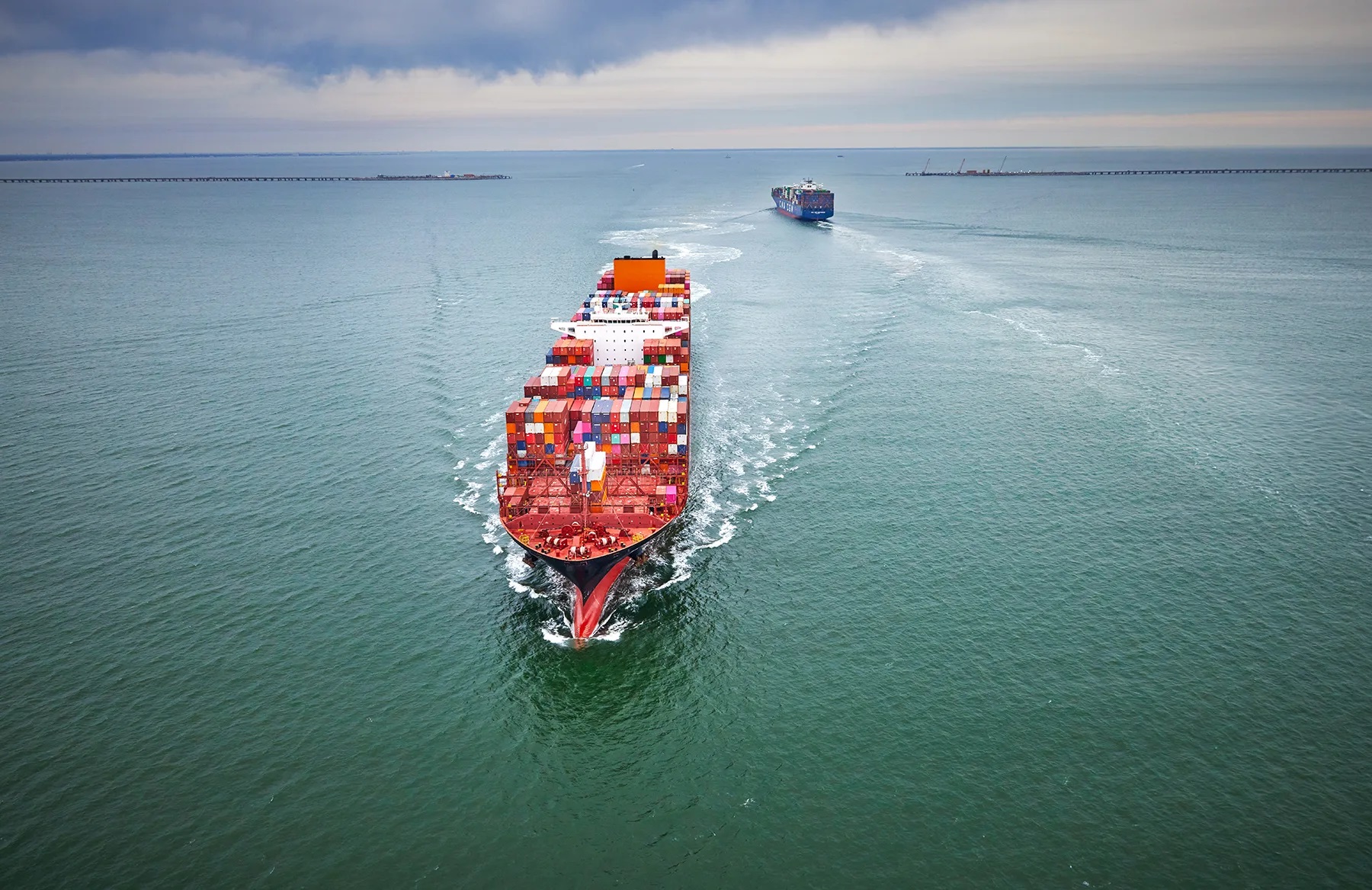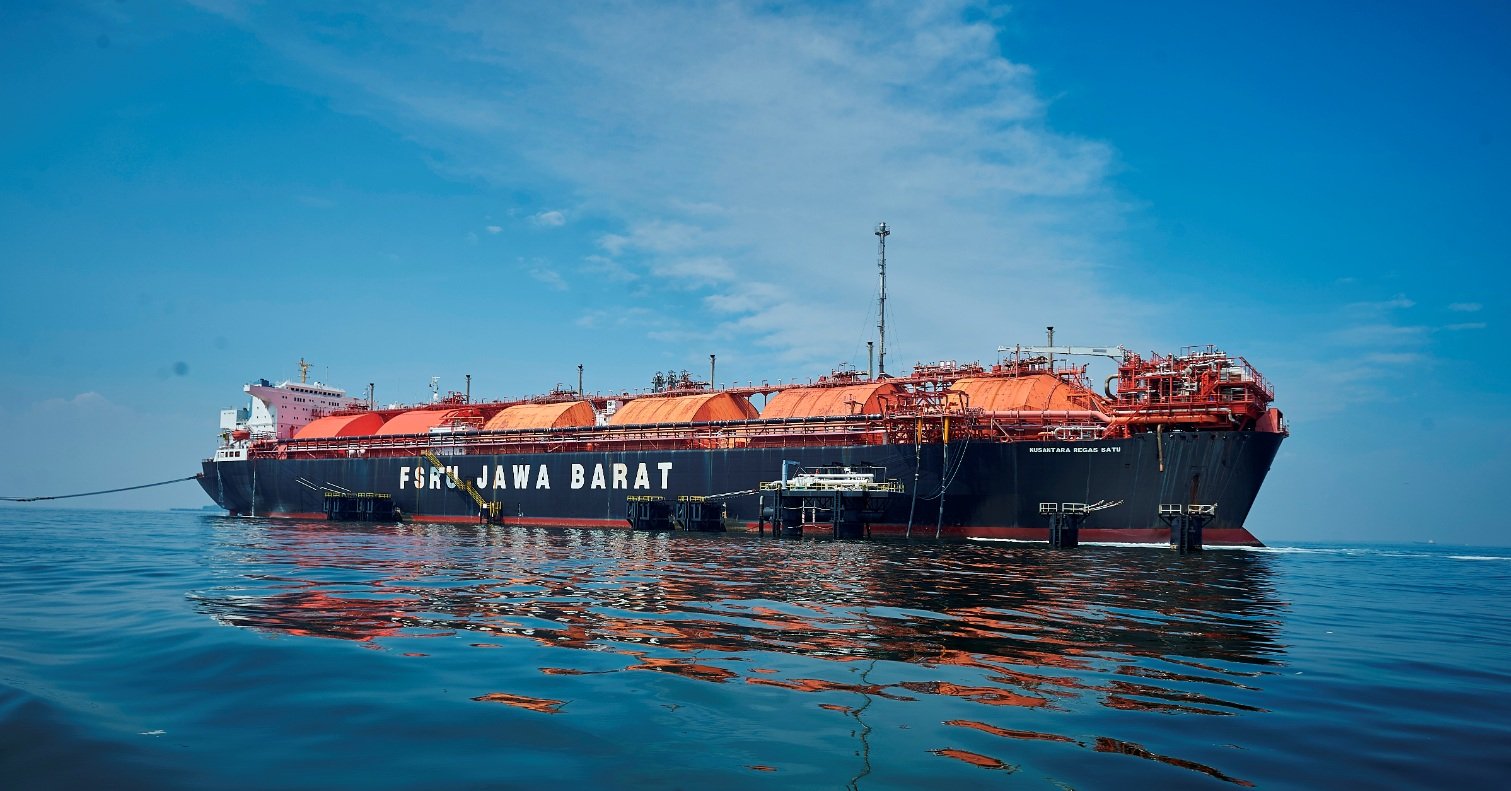On October 14, the new port tariffs determined by the United States Trade Representative (USTR) will come into effect, to be applied to vessels built in China or operated by companies from the Asian giant that arrive at US ports.
The measure, which aims to reduce Chinese influence in the infrastructure and logistics of the North American country, raised certain fears about the potential increases it could generate in maritime transport costs, directly impacting US export prices.
However, while the countdown continues, some of the world’s major shipping lines have already ruled out the application of surcharges. Cosco Shipping, OOCL, Maersk, CMA CGM and HMM previously reported that they do not consider increasing shipping rates; this week, the same decision was announced by Germany’s Hapag-Lloyd and Japan’s Ocean Network Express (ONE), the latter formed by Nippon Yusen Kaisha (NYK), Mitsui OSK Lines (MOL) and K Line.
In this way, these determinations could help calm the concerns swirling in an industry already agitated by the tariff fluctuations fostered by the administration of President Donald Trump, which throughout this year have kept global trade on edge.
In Chilean waters, the project that modifies the Cabotage Law is attempting to set sail. Although the Ministry of Transport and Telecommunications supports the maritime initiative, assuring that it will boost the sector at the national level, there are some critical views that express their reservations regarding the realization of the legal change.
From that perspective, the Liga Marítima de Chile (Ligamar) warned that the idea could generate unfair competition for the national merchant marine and, furthermore, control over strategic cargoes such as hydrocarbons, copper, or chemical products will be lost.
The president of Ligamar, Edmundo Gonzáles, pointed out that the project implies a loss of sovereignty and, furthermore, its discussion has been focused on an economistic viewpoint, setting aside its strategic and national security implications. Under the organization’s scrutiny, the initiative will not bring about a major change for the industry, as it is not proposed as a regulation to, precisely, strengthen Chilean maritime transport.
Unions, federations, and worker institutions of the Chilean merchant marine have joined the same stance, expressing their concern about the project and alerting that the legislative text still maintains provisions that have not been modified, which would affect the performance of their activities, should the initiative be approved in its current form.
The groups called for amending the definition of cabotage, changing the concept of foreign trade cargo movement – considered too broad – and specifying that such activity will be limited exclusively to container transport. Likewise, they raised other points such as limiting to 30% the cargo capacity that a foreign trade vessel can allocate to cabotage.
Despite the criticism, there are also favorable views. One of them is that of Senator Gastón Saavedra, who valued the project’s progress in Congress and assured that its approval will allow for the emergence of a modern logistics system, boosting the country’s competitiveness.
The port industry was in this week’s radar view.
In Latin America and other latitudes, ports continue their efforts to strengthen their capacities and support the cargo volumes that transit through their docks.
One example was DP World Posorja, which received the STS cranes with the largest range that can now be found in Ecuador. The arrival of the equipment was part of an expansion project the operator is working on, which will allow it to handle container ships of up to 400 meters in length with a capacity of 24,000 TEU and 24 rows of containerized units.
Colombia officially launched the 24/7 Port Services Presentation Pilot, a plan that seeks to streamline international trade and reduce times by integrating the operation of container yards, maritime terminals, transport companies, and other logistics facilities. Its implementation will take place in Buenaventura, considered one of the country’s main maritime connection points.
In the United States, the Port of Los Angeles is seeking to grow and requested proposals from interested parties to participate in the pre-development of Pier 500, a new independent container marine terminal. The selected entity would sign a public-private agreement to evaluate the financial feasibility of the project, obtain exploitation rights, and manage other necessary requirements before its implementation and construction.
Also in US territory, Philaport, the entity that administers the terminals along the Delaware River, announced the purchase of a facility belonging to Mustin Yard to expand its cargo handling capacity. The space, located next to SouthPort, includes an intermodal transfer facility.
In terms of cargo volumes, the Port of Savannah achieved a 9% increase in container handling during August, thanks to handling 534,037 TEUs. In the fiscal year to date, the container volume was 1,010,725 TEUs, 3.2% more than last year.
In Chile
Chilean ports improved the volumes of cargo transferred between January and August 2025, totaling 75,845,472 tons of cargo, an increase of 1.24% compared to the same period the previous year. Among the port system, Caldera was the place from which the largest amount of cargo was shipped abroad, while San Antonio was the main entry point.
The latest Container Port Performance Index (CPPI), developed by the World Bank and S&P Global Market Intelligence, ranked Puerto Coronel as the container terminal with the best performance in the country. In the same Bio Bio Region, the Empresa Portuaria Talcahuano – San Vicente is aiming to increase cargo and attract new flows from the central-south and southern zones of Chile.
In Valparaíso, a week marked by several events took place. On one hand, the Empresa Portuaria Valparaíso (EPV) released the final document of the Valparaíso Coastal Zone Strategic Plan (PEZC), an initiative that seeks to articulate the port, urban, heritage, and tourist uses of the city’s coastal zone.
On the other hand, the streets of the port city were the scene of new demonstrations by temporary port workers, as part of their negotiation with Report, a company linked to the Terminal Portuario Valparaíso (TPV).
The protests resulted in clashes with the police and the operational paralysis of TPV.
In the navigation sector, SAAM Towage Perú christened the new tugboat Charrán, which joined the company’s fleet to provide services in the Port of Callao. The vessel is 24.4 meters long and 12 meters wide, has a bollard pull capacity of 80 tons, and achieves a maximum speed of 13 knots. Its design was developed by the Canadian firm Robert Allan Ltd. and it was built at the Sanmar shipyard in Turkey.
Also in Turkey, the latest tugboat from Sanmar Shipyards, built for Ultratug, completed a comprehensive sea trial program. The vessel has a molded breadth of 12 meters, a length of 24.4, a molded depth of 4.5 meters, and a navigational draft of 5.45.
During the week, SAAM completed the full acquisition of Intertug, after finalizing an agreement to purchase the 30% of the companies, which operate in Colombia and Mexico, in a transaction involving an investment of USD 30.5 million.
In other latitudes, Boluda Towage reported the purchase of the tug and salvage areas of Royal Boskalis Westminster in Australia and Papua New Guinea, valued at USD 640 million. Now, the Spanish company has a presence in 232 ports on five continents.
Shipping Lines
Shipping lines made headlines in recent days with the launch of new services. Mediterranean Shipping Company (MSC) introduced Sambar, which will connect China with Vietnam, Thailand, and Malaysia. Evergreen Line, together with Wan Hai Lines and Yang Ming, will offer a route called China – /Malaysia (CIM), aimed at connecting the Asian market.
Regarding vessels, Maersk implemented an efficiency program for its time-chartered fleet involving 50 shipowners to reduce the cost of slots and greenhouse gas emissions.
NYK and Stolt Tankers Limited signed a contract with the Nantong Xiangyu shipyard in China for the construction of two chemical tankers with deliveries scheduled for 2028 and 2029. For its part, HD Hyundai Mipo Dockyard Co. secured an order to build three feeder-type container ships destined for the Oceania region.
In Europe, the Grimaldi Group welcomed the Grande Svezia to its fleet, the second in a series of ten next-generation Pure Car & Truck Carriers (PCTC) under construction at China Merchants Heavy Industries Jiangsu.
The Panama Canal announced the launch of LoTSA 2.0, the new generation of the long-term slot allocation program. The LoTSA 2.0 packages will shift from a 12-month horizon to a more agile offer divided into two six-month cycles.
The idea is that, by shortening the commitment period, users can better adjust their transit planning to market conditions, seasonal fluctuations, and fleet deployment strategies. Additionally and complementarily, the canal introduced a customer service team dedicated to LoTSA.
One of the benefits of the tool will be that users will be able to book their transit date and declare the vessel name up to 15 days in advance.
They may also request up to two date changes with five days’ notice.
The first booking cycle will be valid for transit dates between January 4, 2026, and July 4, 2026. Meanwhile, the second period will be enabled for transit dates from July 5, 2026, to January 3, 2027.
In Chile, the National Association of Ship Agents (Asonave) requested a postponement of the mandatory implementation of the Single Maritime Window (Vumar) in the ports of the Valparaíso Region, scheduled for next October 6.
The request was based on persistent flaws in the platform that need to be resolved.
Furthermore, Asonave warned that the launch of Vumar coincides with the start of the high season for fruit exports and the arrival of cruise ships, which corresponds to a critical period.
Finally, the Technical Commission for Maritime Transport Facilitation and Simplification decided to postpone the mandatory entry into force of the Single Maritime Window in the ports of the region.
The new date has been set for next November 3, 2025, and it is expected that the platform will be functioning without any errors with all state entities integrated.
The Central Bi-Oceanic Corridor Rondón, which will connect Brazil and Chile with an outlet to the Pacific at the Port of Arica, received a new impetus. Bolivia joined the initiative, which is also encouraged by the Brazilian state of Rondônia.
At the First International Meeting on Integration and Commercial Development held in Oruro, authorities such as the governors of Oruro, Johnny Vedia; Cochabamba, Humberto Sánchez; and Sucre, Damián Condori, expressed their interest in moving towards a trinational governance to accelerate the realization of the route.
Further south, the Argentine province of Tucumán plans to send its production to the world through the Port of Coquimbo, considering it an ally to access Asia-Pacific markets. The idea is to take advantage of the consolidation of new export routes and the Central Bi-Oceanic Corridor.
According to the Coquimbo Regional Government, Tucumán concentrates 65% of Argentina’s sugar and leads the world in lemon exports, with derivatives reaching the United States, Europe, and Asia.
Given the aforementioned projections, the port facilities of Arica and Coquimbo could see their goal of increasing the cargo volumes moving through their docks approach, a goal that is favored amid this boom by the establishment of international land logistics connections.
In terms of port security, there were new developments this week regarding the radar. In Brazil, the Port of Imbituba was the scene of an international session to train a group of specialized teams against drug trafficking. The intention was to prepare diving personnel to scan ship hulls for drugs.
Also in Brazilian territory, the Santos Port Authority (APS) expanded its capacity to defend the Port of Santos from cyberattacks and, in 2025 alone, the entity has invested USD 6.1 million in information technology.
Among the advances, the complete renewal of the licensing for equipment essential for the defense of its digital environment and the enabling of real-time threat intelligence stand out.
On the other side of the Atlantic, in Spain, the Port of Barcelona incorporated a drone nest into its port protection network to make security operations more efficient. This system allows for a drone to be always available and operational almost immediately to complement the systems that guarantee security at the maritime facility.
From the networks, the most viral




